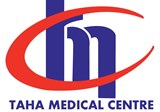Early identification of orthodontic issues: Why it Matters
Orthodontic issues can significantly impact a child’s oral health ,self-esteem and overall well being. Early identification of these problems is crucial for effective treatment and prevention. In this blog, we’ll explore the importance of recognizing orthodontics issues early, the signs to look for, and the benefits of timely intervention .
Understanding Orthodontics Issues
Orthodontic problems often involve misalignment of teeth or jaw structures. Common issues include:
Crowding: Insufficient space in the jaw for teeth to align properly
Spacing: Gaps between the teeth that can lead to misalignment.
Overbite/Underbite: Misalignment of the upper and lower teeth, which can affect chewing and speaking.
Crossbite: When teeth don’t meet correctly, causing uneven wear and discomfort.
Open Bite: Condition where upper and lower teeth doesn’t meet .
Signs to watch for: Parents and caregivers should be vigilant for certain signs that may indicate the need for orthodontic evaluation.
Early or late loss of baby teeth: This can disrupt the natural alignment of incoming permanent teeth.
Difficulty in chewing and biting: Struggles with eating can indicate underlying issues with jaw alignment.
Speech difficulties: Problems with articulation can sometimes be linked to dental misalignment.
Mouth breathing: This habit can lead to various dental and health issues and may suggest dental problems.
Visible overcrowding or Gaps: Unusual spacing or overlapping of teeth is a clear sign of potential orthodontic issues.
The importance of early evaluation
American association of orthodontists recommends that children receive their first orthodontic evaluation age 7. At this stage, a pediatric dentist can access the alignment of teeth and growth of the jaw. Early evaluations allow for the identification of issues before they develop into more serious problems. Assessment of jaw growth is important to prevent complications.
Benefits Of Early Interventions
Simpler treatment options: Early intervention often leads to simpler and less invasive treatments. For example using space mainteners can help guide proper tooth eruption.
Reduced treatment time: Addressing issues early can minimise the duration of orthodontic treatment later on leading to quicker results.
Enhanced self esteem: Addressing orthodontic concerns early can improve a child’s confidence and social interactions, as they may feel better about their smile.
Improved Oral health: Correct alignment can lead to better hygiene and a lower risk of cavities and gum disease.
Conclusion
The early identification of issues is essential for ensuring the best outcomes for children’s dental health. Parents should stay informed and proactive about their child’s oral development. Regular dental check ups and awareness of the signs of orthodontic problems can lead to timely intervention, setting the foundation for a healthy, confident smile. Consult with a pediatric dentist for comprehensive evaluation and personalized treatment plan especially for the age of 7 to evaluate the jaw growth to identify and intervention as and when needed.

